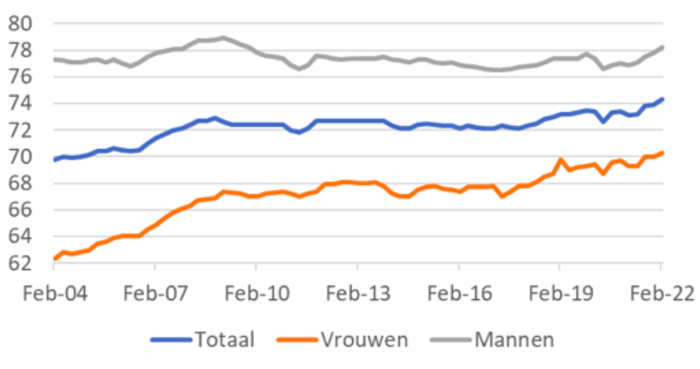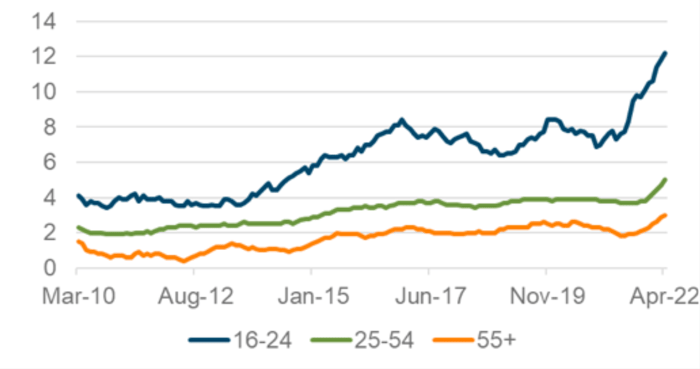
Our labour market is unprecedentedly tight. In the first quarter, there were 133 vacancies for every 100 unemployed. And nearly 40 per cent of retail entrepreneurs say their business is hampered by a staff shortage. It raises several questions: “what can we do about it?” and “is a tight labour market bad?”
Google Translated from Dutch to English. Here is the link to the original article in Dutch. The article was originally published on 23 May 2022.
According to CBS, there are almost half a million part-timers who would like to work more hours. Then there are nearly 200,000 people who say they are available for the labour market but are not actively looking for work. Make it financially and logistically more attractive for those people to work.
I would prevent labour migration as much as possible and limit it to specific sectors, especially those critical for our international competitiveness.
The labour participation rate (which part of the population over 15 can be counted as part of the labour force) could also increase somewhat. Looking at the numbers, I think that will happen on its own. In the 45-75 age cohort, the employment rate of women is considerably lower than that of men.
This is much less the case among 25-45-year-olds. As the current 25-45-year-old women pass 45, the participation rate in that highest cohort is therefore very likely to increase. In the short term, of course, we have nothing to do with that.
In addition to what we can do about the labour shortage, we have to ask how bad it is. The labour shortage currently hinders the production of goods and services. That puts a brake on wealth creation. It is also highly bothersome. For example, we are faced with long queues and cancelled flights at Schiphol. Restaurants are closed all day due to staff shortages. Education is struggling with teacher shortages, healthcare lacks nurses, and finding a plumber or plasterer.
The advantages
However, there are also advantages to the labour market tightness, quite apart from the low unemployment rate. For example, labour participation has recently started a remarkable increase. In April, it reached the highest level ever recorded: 74.6 per cent. People are waking up and seeing more opportunities to be economically active.
Labour market participation | Total - Female - Male

Another advantage is that the prospects for the underprivileged are improving strongly in a very tight labour market. The US central bank has even made the pursuit of a 'red hot' labour market a target in recent years. It turned out that unemployment among the underprivileged fell disproportionately quickly in a tight labour market, while inflation was not directly whipped up by it. Undoubtedly, it will take some time for entrepreneurs to focus on the underprivileged, but it will eventually happen.
Wages are rising faster
Another consequence of the tight labour market is that wages are rising faster. If that keeps the inflation process going, that is, of course, negative. It is essential that wage growth is not accelerating to the same extent for everyone. According to American statistics, young people's wages are rising the fastest.
This is undoubted because job growth is highest in sectors where many young people work. It doesn't seem wrong to me that the wages of young people are rising so fast, and hopefully, that will be the case with us too. Perhaps that will help those young people in the housing market where they are so often left behind.
Hourly wages increase by age (%)

The main benefit of a tight job market is that it forces entrepreneurs to be creative, which means improving productivity. That is, of course, not easy, but either you are an entrepreneur, or you are not. Increasing productivity does not happen overnight and requires the necessary effort and, indeed, the necessary investments.
Ultimately, however, we must not forget that productivity gains are the primary source of a higher standard of living. Perhaps the current tight labour market will boost productivity growth that has been weakening for years.



